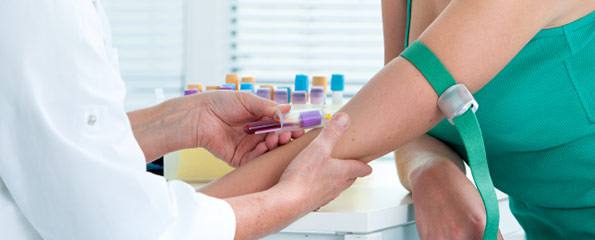Gout is a buildup of uric acid in the joints, often in the big toe joint. Dr Joe Kosterich talks about gout, including what it is, what causes it, what it feels like, how you know it is gout, and what you can do about it.
Transcript
Many of you may have heard of the stereotype image of a retired army colonel in his club with a cigar in one hand and a glass of port and the foot up on the stool. It’s not quite as simple as that but there are some grains of truth in stereotypes.
Gout is a build-up of uric acid in the joints. The most typically affected joint is the first big toe joint, so where the toe meets the foot. Exactly why that joint is affected more than others, I don’t think to be honest anybody knows and it’s not something that has attracted a lot of study.
However gout can affect other joints and the knees and elbows are probably the next two most commonest ones and then, you know, almost any joint in the body can be affected. Again, for reasons that I don’t think anybody really knows, you rarely get gout for example in the back and I’ve never seen it in the shoulder but you know, it could well happen.
Uric acid is like a lot of things in the blood stream. There’s a certain amount that you need, if there’s too much it’s a problem. Uric acid comes about as a break down product and it’s particularly from the breakdown of blood cells. Now the blood cells turn over every 90 days. So literally everyday there are new blood cells being made and old ones being broken down. That uric acid is processed through the liver and the kidneys and excreted out of the body.
If it builds up in the blood stream some of it can deposit in the joints. When it does deposit in the joints, that’s when you may get the symptoms of gout.
The symptoms of gout are a painful joint and it can be quite acutely painful. People describe it as like a knife going into the joint. It’ll often be quite red, hot and sometimes swollen. Now as we’ve said the big toe is the commonest site and hence the image of somebody sitting with their foot up.
Alright, now the next thing becomes what can one do about gout and how do you know if it is gout? Now this is where it’s relatively straight forward but there is a twist. We can do blood tests for uric acid and certainly a raised uric acid would be a strong pointer to gout. Some people may have a raised uric acid level in the blood stream and never experience gout and some people may experience gout, but for different reasons or reasons we don’t understand, not have raised uric acid in the blood stream. So there is a link between the two but it’s not a 100% correlation.
The other cause of uric acid in the blood stream is of course is from diet and rich foods that are high in what are called purines will put more uric acid into your system. Blue cheeses are a culprit, game meats can be, alcohol, and that gets us back to our army colonel at the start, and also things like liver pate and sweet breads.
Treatment of gout is two-fold. Number one is the acute treatment and that can be either with an anti-inflammatory type agent, now again, not everybody can take these because they can cause stomach upset in some people. These can be the same ones that are used for other forms of arthritis. There is also a specific tablet for gout called colchicine, comes under a few different brand names and that is more specific for gout. If you just have regular arthritis it may not do that much but it’s used for gout. That will treat the acute phase and will generally settle down in anywhere between three and seven days.
For people who get recurrent episodes of gout, there are some preventative medications and that is called allopurinol, again, comes under a few different brands names. Now this medication doesn’t treat gout. If you have a painful toe it’s not going to do anything. However it works to lower uric acid level in the blood stream. So for people who have recurrent gout and have raised uric acid, taking allopurinol will lower uric acid in the blood stream. And we do know that this will reduce the frequency and the severity of episodes of gout. It doesn’t mean you can’t ever get it.
There is one catch. When you first start on allopurinol it can trigger off an episode of gout because it’s leeching some of the uric acid out of your system. So often people will be started concurrently on the preventive medication as well as something to treat acute gout. Now these are things obviously to have a chat about with your doctor.
Okay, so to sum up, gout is a painful condition. For the vast majority of people it’s not a serious condition, it’s not something you’re going to die of but it can certainly make your life quite miserable. The good thing about gout is that it’s quite treatable, both in the acute phase but also it’s something that can be prevented.
Not everybody needs to be on preventive medications. If you’ve had one episode of gout every three years, you probably don’t want to take a tablet every day. But if you’re getting episodes every month, then you can certainly do things to prevent it.
We spoke about some of the food to avoid and that’s worth having a chat with your doctor and finding out whether there’s anything in your diet that may be contributing. Drinking lots of water is the other really important thing because it can help flush the uric acid out of your system.
So, gout, not pleasant, but fairly straight forward to manage.
More information
 |
For more information on the risk factors, symptoms and treatment, see Gout. |
All content and media on the HealthEngine Blog is created and published online for informational purposes only. It is not intended to be a substitute for professional medical advice and should not be relied on as health or personal advice. Always seek the guidance of your doctor or other qualified health professional with any questions you may have regarding your health or a medical condition. Never disregard the advice of a medical professional, or delay in seeking it because of something you have read on this Website. If you think you may have a medical emergency, call your doctor, go to the nearest hospital emergency department, or call the emergency services immediately.







